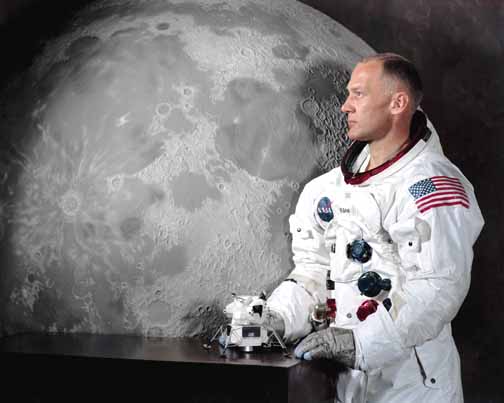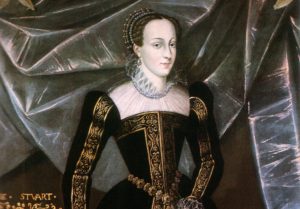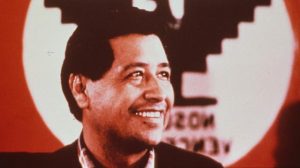July 20, 1969—a day that would go down in history, as the first humans went on to set foot on the Moon. With an estimated 530 million people worldwide watching at the time, today’s generation can recall their parents or grandparents describe the chills they felt as Neil Armstrong spoke his famous words.1 People today tend to forget that there was a second man to touch down some fifteen minutes after Armstrong: Edwin “Buzz” Aldrin, a man sometimes forgotten simply because he was not the first man on the Moon, on a mission that could have been quite capably another NASA tragedy.
The Apollo 11 Mission consisted of a crew of three men; Apollo 11 Commander Neil Armstrong, Command Module Pilot Michael Collins, and Lunar Module Pilot Edwin “Buzz” Armstrong.2 On July 16, 1969, the crew prepared to launch from Cape Kennedy in Florida. Aldrin described what he saw, as his colleagues were being strapped into the rocket. He took in the moment and the magnitude of the journey the crew was about to embark on:

“As far as I could see there were people and cars lining the beaches and highways. The surf was just beginning to rise out of an azure-blue ocean. I could see the massiveness of the Saturn V rocket below and the magnificent precision of Apollo above. I savored the wait and marked the minutes in my mind as something I would always want to remember.”3
At 9:32 a.m. on July 16, 1969, the Saturn V Rocket ignited, launching the crew of Apollo 11 towards the Moon some 238,900 miles away. Aldrin poetically describes his view of Earth from space, “The thought reoccurred that wars are generally fought for territory or are disputes over borders; from space the arbitrary borders established on Earth cannot be seen.”4
On July 20, with the ever growing Moon in sight, the Lunar Module detached from the Command Module. From here on out, Aldrin was the pilot. It was his turn to etch his name in the history of humankind.
While advancing toward the Moon’s surface, the dreaded yellow caution light came on. Being so far away from Earth, yet so close to the surface of the Moon, the astronauts’ only hope was that the malfunction wasn’t critical. “Hearts shot up into throats while we waited to learn what would happen.”5 The crew received another caution warning before being told by their flight commander back in Houston to proceed. Following the first two warnings, Aldrin and Armstrong went on to receive at least three more warnings before being reassured, once again, that the mission was still a go.
July 20, 1969 at 4:17 p.m. — Edwin “Buzz” Aldrin successfully lands Lunar Module Eagle on the surface of the Moon in Mare Tranquillitatis (The Sea of Tranquility). Command Center has been painfully waiting four long days to hear Aldrin radio the words of success: “Houston, Tranquility Base here. The Eagle has landed.”6

Edwin “Buzz” Aldrin became the second man to set a pair of footprints on the surface of the Moon some fifteen minutes after his Command Leader Neil Armstrong initially touched down. When asked about the Moon’s scenery, Aldrin described it as “Beautiful, beautiful. Magnificent Desolation.”7 The crew spent the following hours taking samples from the Moon, taking photos, and of course, planting the American Flag on the Moon’s surface.
Twenty-one hours after landing, it was time to head back to Earth. The Eagle would meet back up with the Command Module Columbia and its pilot Michael Collins in the Moon’s orbit. The crew shared a brief celebratory moment before preparing their return voyage—back towards Earth’s orbit. The crew would return to Earth eight days after launch, landing in the Pacific Ocean on July 24, 1969.8 In a stunning display of American science Buzz Armstrong, along with the rest of the Apollo 11 crew, ultimately ended the Space Race—heeding President John F Kennedy’s 1961 call to put American men on the Moon and safely return them before the decade’s end.

“And, therefore, as we set sail we ask God’s blessing on the most hazardous and dangerous and greatest adventure on which man has ever embarked.” — John F. Kennedy, September 12, 1962
- Sarah Loff, “Apollo 11 Mission Overview,” NASA, April 17, 2015. http://www.nasa.gov/mission_pages/apollo/missions/apollo11.html. ↵
- Lawrence W. Baker, Sarah Hermsen, Rob Nagel, Peggi Saari, Space Exploration Reference Library (Detriot; UXL, 2008), 178. ↵
- Edgar M. Cortright, Apollo Expeditions to the Moon: The NASA History (Courier Corporation, 2012), 204. ↵
- Edgar M. Cortright, Apollo Expeditions to the Moon: The NASA History (Courier Corporation, 2012), 206. ↵
- Edgar M. Cortright, Apollo Expeditions to the Moon: The NASA History (Courier Corporation, 2012), 212. ↵
- NASA Content Administrator, “July 20, 1969: One Giant Leap For Mankind.” NASA, February 19, 2015, http://www.nasa.gov/mission_pages/apollo/apollo11.html. ↵
- Buzz Aldrin and Wayne Warga, Return to Earth (Open Road Media, 2015), ebook. ↵
- Buzz Aldrin and Wayne Warga, Return to Earth (Open Road Media, 2015), ebook. ↵



97 comments
Montserrat Moreno Ramirez
I read this article before and really like how the author talks about this great mn who almost no one ays attention to. Everyone knows who Neil Armstrong is, but i think no one cares for the second places. Just eighteen minutes made the difference between one man’s fame and the other one. think that what Nathan Alba did was great and really important for the world’s history!
Valeria Perez
Buzz Aldrin was an incredibly brave man for being part of the first moon landing mission. It must have been terrifying not knowing if the mission would succeed, whether there would be a malfunction, or whether you would come back alive. Nevertheless, his bravery and moon landing are now part of history. This was an amazing article, really good job!
Damian Jennings
Stories are always misleading especially when reported by media outlets, I am not going to go and call out any televised media creators but it is a different story once proper research and background knowledge is obtained. One of the most American things we have done, what a fine choice of a topic and congratulations on being a nominee, this was a great read!
Alexandria Zapata
Everybody always focuses on Neil Armstrong, but people tend to forget about Buzz Aldrin. It was very interesting to read a story about a trip to the moon, in a different point of view. Not of like a NASA employee, or Armstrong, but someone who also witnessed what was happening. Even though they received like 3 warnings, they still kept on going, and made it to the moon. Very good article with great flow.
Bruno Montes de Oca
This article here makes a very good point, how close some people are to being huge names in history, but are yet so far. In Buzz Aldrin’s case, he was 15 minutes away from being the first man on the moon. Yet, he may have been more crucial in this mission than commonly known. I have done a lot of space research myself, and I didn’t know about the Apollo 11’s problems with the warning lights they got before they landed. However, I should have known something happened because missions like these never go without speed bumps, and as the Lunar Module pilot, Buzz may have kept this mission on course and is the reason Neil Armstrong got to land on the moon at all and he should not be forgotten.
Brianna Ford
I really like the title, I had no idea that another man went up to the moon. It is a different type of story to read since I am always use to seeing Neil Armstrong. This article helped me learn who Buzz Aldrin was. He was a crucial part in the Apollo mission and should be credited just as much as Armstrong. The moon landing will forever be a great achievement for the United States. Congratulations on the nominations this was well deserved.
Enrique Segovia
Congratulations Nathan Alba for your nomination in the category for Article with the Best Title! Many people only remember Neil Armstrong for being the first human to ever walk on the Moon. However, I consider Buzz Aldrin’s story as equally important, since many information was collected in his moon walk, and the description of the Apollo 11 missions were really entertaining. It is nice to know the actual details that Buzz aldrin gave about the Moon’s scenery in his mission.
Honoka Sasahara
This article is well-written and made me so excited. I visited NASA space center at Houston recently, which makes reading this story more and more interesting, and I wish I could experience the wonderful moment of achievement in front of TV or somewhere at that time. It must be one of the most important moment in human history.
Maggie Amador
Rereading this article is just like the first time, I am still amazed at how little recognition Buzz Aldrin receives compared to Armstrong. This title is incredibly creative and when it compelled me to click on the article wondering what feat Aldrin had accomplished to bring mankind further. Little did I know that Aldrin’s leap was quite literal. Great article and great title!
Adam Portillo
Although Neil Armstrong gets much of the glory, this article shows that Buzz Aldrin also made huge contributions to reaching the moon. This article definitely is clear in terms of how Buzz Aldrin is often downplayed as only being the “Second man on the moon”, but he was so much more than that and this article does tremendous job of making this clear to the readers. Awesome article.